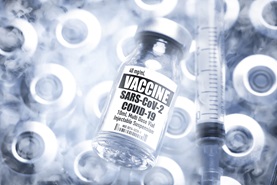ESG Investors Consider Socioeconomic Impacts of COVID-19 in the Construction Industry
The construction industry can have a reputation for workforce insensitivity and is highly vulnerable to economic and social variabilities. The ESG Impacts of COVID-19 drive companies to adapt to significant challenges related to the demand for construction services. This construction sector research snapshot highlights relevant social issues that corporations face due to ripple effects from the pandemic using Sustainalytics’ ESG Risk Ratings and Controversies Research.
Delays, Questions and Confusion: Updates on the EU’s Sustainable Finance Disclosure Regulation
In this blog, we look at the delay of the level 2 regulation, some aspects of the Q&A, and the ongoing confusion and divergence around SFDR. We pay special attention to the potential impact of the Principle Adverse Impact indicators, an element of SFDR.
Financing Sustainability: Recent Trends in Sustainable Bonds, Linked Instruments and Disclosure
The “Financing Sustainability: Recent Trends in Sustainable Bonds, Linked Instrument and Disclosure” ebook shares insights on recent progress made by organizations bridging the gap between sustainability and finance.
What’s Happening in Sustainable Finance: Adopting the Climate Transition Finance Handbook, Recovery Through Sustainable Sovereign Debt and More
In this episode, we discuss ongoing diversification in the labeled bond market and highlight developments around transition finance guidance as well as new and updated principles in the loan market.
ESG Risk Exposure from COVID-19 Vaccine Transportation and Distribution
As mass vaccination against the coronavirus started, a key challenge has been to keep millions of doses of vaccines at the right temperature. An increase in temperature inside a truck or aircraft, by half a degree, for half an hour, would reportedly result in a 'defrosted' vaccine which has then to be discarded.
EU Taxonomy Developments and the EU’s Renewed Sustainable Finance Strategy
On July 6th, the European Commission published its Strategy for Financing the Transition to a Sustainable Economy, the successor of the EU’s Sustainable Finance Action Plan, which launched in 2018. The strategy focuses on transforming the financial system and financing transition plans, building on the 2018 Action Plan, which centered on developing the EU Taxonomy, putting in place disclosure regimes, and developing tools for the market to develop sustainable investment solutions and prevent greenwashing.
The Mutual Influence of Investors and Government
On issues from voting rights to climate change, the relationship between investors, companies, and governments has never been more dynamic. This has spurred a lively discussion about the impact and appropriate role of these actors in addressing systemic environmental and social issues. An increasingly cited view is that commitments made by businesses and investors are often superficial, and at best, can provide only incremental progress towards addressing the problems we face. Some go further to suggest that sustainable investing has done more harm than good, with the notion that these efforts have provided a false sense of progress and have delayed meaningful government action. This is a worthwhile debate, but my experience over the last eight years in the sustainable investing space has given me a very different perspective.
Sustainable Finance Insights on Transition Finance, Sustainability-Linked Bonds, Sovereign Bonds and More
In this episode, we discuss ongoing diversification in the labeled bond market and highlight developments around transition finance guidance as well as new and updated principles in the loan market.
Using Systems Thinking to Avoid ESG Investing Blind Spots
For investors looking to enhance ESG risk management and the long-term impact of sustainability efforts, a systemic approach can help identify interventions that will most effectively mitigate the risk of negative outcomes or divert the chain of events towards a more sustainable trajectory. Typically, this involves moving from single-issue or company-specific tactics to progressively integrate system-level considerations in ESG strategies. Targeting systemic change through active ownership is one way to acknowledge and start unravelling the dynamic web of global challenges.
Sustainalytics Weighs in on EU Taxonomy’s State of Flux
On May 7th, the European Commission published draft rules on how corporates and financial institutions should report on their alignment with the EU Taxonomy. The draft rules are laid out in a very technical document and not an easy read. This might explain why certain changes with significant impact on timelines and scope of the EU Taxonomy Regulation have flown under the radar of media and investors. Some of the impacts even escaped the attention of financial market participants responding to the consultation on the rules.
What Climate Litigation Means for the Oil & Gas Industry
As the global economy looks towards recovery after being impacted by the pandemic, the oil and gas industry faces a growing wave of shareholder activism and climate litigation due to a heightened focus on an accelerated transition as an indirect impact of the pandemic – painting an increasingly bleak picture for those within the industry.
La pertinence des labels ISR dans le contexte de la SFDR et des mesures de l’AMF contre le greenwashing
Une marée de réglementations liées à l’ESG s’abat sur les investisseurs institutionnels. Avec l’introduction de SFDR et les obligations de publication mises en place par l’AMF, se pose la question d’une possible obsolescence des labels ISR dans la lutte contre le greenwashing. Un phénomène qui inquiète de plus en plus les investisseurs et les régulateurs au vue de la croissance constante du marché des fond ISR. Pendant de nombreuses années, l’industrie s’est auto-régulée en s’accordant sur une définition générale de l’investissement responsable et/ou en se tournant vers les opérateurs de labels pour créer des standards de marché.
The Why and the How of Socio-Economic Impact Reporting
As CSR has evolved, companies have become accountable to more than just their shareholders. Stakeholders of all stripes are demanding greater accountability and transparency from organizations. Socio-economic impact reporting goes beyond traditional CSR to provide quantifiable evidence of a company’s positive socio-economic impact on its stakeholders.
ESG Spotlight Report - Race, Ethnicity and Public Equity: A Global Snapshot
Sustainalytics has published a new ESG Spotlight Series report, Race, Ethnicity and Public Equity: A Global Snapshot, which presents an analysis of racial and ethnic issues linked to listed companies’ operations, supply chains and the societal impacts of their business activities. Our research finds that although a growing number of firms are disclosing diversity and anti-discrimination initiatives, management gaps persist and related controversies are on the rise.
Sustainable Finance Insights - Climate Adaptation, Biodiversity, Natural Capital, and More
In this monthly round-up of sustainable finance news, transactions, and regulations, Nick and Cheryl discuss the importance of biodiversity, demands for more sustainability reporting standards and answer listener questions.
Royal Dutch Shell Court Order Shifts Paradigm for Corporate ESG Accountability
On 26 May 2021, the Court of The Hague orders Royal Dutch Shell (RDS) to reduce CO2 emissions to a net 45% by the end of 2030 compared to 2019 through the Group Policy of the Shell Group. The order of a national (Dutch) court demands that a global company (RDS) fulfills its obligations under the Paris Climate Agreement, although RDS was not a party in that agreement, and there is no legal equivalent in The Netherlands. What are the broader consequences of this order, also globally and for other companies and potentially also other jurisdictions?






.tmb-thumbnl_rc.jpg?Culture=en&sfvrsn=f9fcdf85_1)













